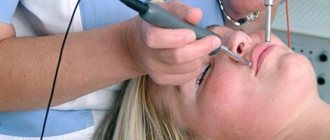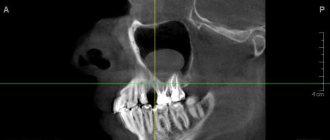Content
- Types of food poisoning
- Signs and symptoms in children
- Causes of food poisoning in children
- What should you do if you are poisoned?
- Peculiarities of child nutrition after treatment
- Disease prevention
Food poisoning is a complex of painful symptoms that occur when the body is affected by poisonous and low-quality products of animal or plant origin. Toxins can enter in different ways: through the intestines, absorption through the mucous membrane of the nasopharynx, or inhalation. In children under one year of age, absorption and distribution throughout the body occurs faster. Source: H.D. Abdikhakimovich Features of the course of foodborne toxic infections // Pediatrician, 2022, v. 8, special issue
Poisoning in children is more common than in adults, and its course is much more complicated. This is explained by the peculiarity of the child’s still fragile body. In the early years, the intestinal microflora is not yet formed, toxins are quickly absorbed and spread through the blood, and low acidity of gastric juice is noted.
Infection caused by human herpes virus type 6
Human herpes virus type 6 (HHV-6) is a DNA virus of the Herpesviridae family of the Betaherpesvirinae subfamily of the Roseolavirus genus. HHV-6 was first isolated in 1986 from peripheral blood B lymphocytes of patients with non-Hodgkin lymphoma, which occurs in patients with HIV infection. The virus belongs to the subfamily of betaherpes viruses, is the closest genetic relative of CMV, there are two variants: HHV-6A and HHV-6B.
Replication of the virus in peripheral blood mononuclear cells occurs relatively slowly and is accompanied by lysis of the host cell. HHV-6, like other herpes viruses, is characterized by the ability to persist and latency in the body of an infected person. The virus exhibits tropism for a wide range of host cells: it was found in lymph nodes, peripheral blood lymphocytes, monocytes, macrophages, kidney cells, salivary glands, and brain. During an acute infection, the pathogen can be isolated from the blood. After infection, HHV-6 infection becomes latent. The place of virus latency has not been studied; it is assumed that the virus remains latent for some time in monocytes and macrophages. The virus infects the salivary glands and is released from them. Detection of the virus in the blood is typical only during the febrile stage of sudden exanthema and, probably, during reactivation of the virus and generalization of infection under conditions of immunosuppression. The pathogenesis of reactivation of infection is unclear.
HHV-6 infection is an anthroponosis. The source of infection is a person suffering from a manifest or latent form of infection, as well as virus carriers. Routes of transmission of infection: airborne droplets, household contact, parenteral, transplacental. Transmission factors are saliva, sputum, blood. The infection is characterized by universal susceptibility.
The high pathogenetic significance of HHV-6 has been shown: it can cause acute skin lesions in young children (sudden exanthema of newborns), fever in newborns with convulsive syndrome, chronic fatigue syndrome (at the same time, recent studies attach greater importance to HHV-7 in the development of this pathology ), mononucleosis-like syndrome; in immunocompromised individuals – cause fever, pneumonia, hepatitis, and central nervous system damage. It has been proven that the virus can also act as a cofactor for HIV. Along with the occurrence of a primary infection, reactivation of the virus is possible: in children intrauterinely infected with HIV-1, primary HHV-6 infection contributed to a more rapid development of clinical manifestations already during the first year of the child’s life. The presence of an active HHV-6 infection in an HIV-infected child may lead to more rapid progression of the underlying disease during the 1st year of life. Cases of pneumonia and encephalitis of HHV-6 etiology in patients with HIV infection have been described. HHV-6 DNA was determined in brain tissues of deceased patients at the stage of AIDS. In patients with HIV infection with severe immunosuppression, HHV-6 damage to the central nervous system, lungs and other organs is possible, but the clinical characteristics of damage to individual organs, the diagnostic sensitivity and specificity of various laboratory markers have not been precisely characterized.
Verification of the diagnosis of HHV-6 infection is carried out only with positive results of laboratory tests.
Differential diagnosis.
Entero- and adenovirus infection, measles, rubella, scarlet fever, pneumonia, otitis media, acute pyelonephritis, meningitis, pneumococcal bacteremia, allergic rashes.
Indications for examination
- Maculopapular rash (exanthema) in combination with lymphadenopathy after a short fever;
- enlargement of the occipital, posterior cervical and/or parotid lymph nodes;
- research after contact with a patient with sudden exanthema or other infection caused by HHV-6 or suspected of these nosological forms;
- differential diagnosis of exanthema diseases;
- immunodeficiency states;
- chronic fatigue and a decrease in performance by more than 50% with a duration of about 6 months in the absence of other diseases that cause similar symptoms;
- symptoms of congenital infection, developmental defects in newborns.
Etiological laboratory diagnostics include identification of the pathogen in cell culture, detection of viral DNA, determination of specific IgM, IgG antibodies to HHV-6 antigens.
Material for research
- Blood plasma, CSF, leukocyte fraction of blood, saliva - DNA isolation, identification of the pathogen in cell culture;
- blood serum - determination of AT.
Comparative characteristics of laboratory diagnostic methods.
Detection of the pathogen in cell culture is currently not used for routine diagnosis of infection caused by the HHV-6 virus due to the complexity, duration of execution and the need for certain research conditions.
The main method of differential diagnosis of infection is the detection and determination of the concentration of HHV-6 DNA by PCR. When testing whole blood to diagnose infection, DNA quantification is preferred to differentiate between latent and active infection, since the virus may be present in the white blood cells of healthy individuals. Detection of viral DNA in plasma but not in whole blood confirms the presence of an active infection. The results of determining HHV-6 DNA in a quantitative format allow for dynamic monitoring: based on the increase in concentration in peripheral blood, leukocytes, CSF, saliva, establish the activity of the infectious process, identify reactivation, and evaluate the effectiveness of the therapy.
To identify specific IgM and IgG antibodies to HHV-6 antigens, ELISA is mainly used. Determination of IgG antibodies can be performed in qualitative and quantitative format. Detection of IgM antibodies makes it possible to establish a diagnosis of a current primary HHV-6 infection; the results of determining IgG antibodies in a quantitative format allow for dynamic observation and assessment of the state of post-infectious immunity to HHV-6.
Indications for the use of various laboratory tests (herpes type 6 - analysis).
Indicators of active infection are the presence of HHV-6 DNA and IgM antibodies. IgM antibodies appear in the blood 4–7 days after the onset of the disease and persist for several months. IgG antibodies appear in the blood on days 7–10 of the disease and persist throughout life, therefore, to establish the fact of primary infection, quantitative determination of IgG antibodies over time is necessary. Determination of virus-specific IgG antibodies can be used in screening studies to determine the presence of immunity to HHV-6.
Features of interpretation of laboratory research results.
Detection of a specific fragment of HHV-6 DNA in patient biomaterial samples (blood plasma, CSF, scrapings from the mucous membrane of the oropharynx) allows one-time testing to confirm the fact of HHV type 6 infection.
The detection of specific IgM antibodies, markers of the acute phase of the disease, indicates a primary infection or reactivation of the infection. A single detection of IgG antibodies is not unambiguous evidence of a primary infection.
Types of food poisoning
- Microbial. This type includes poisoning from spoiled or contaminated products.
- Intoxication with chemicals. It occurs when toxins enter the gastrointestinal tract and requires urgent medical attention.
- Poisoning with poisonous mushrooms, fish or meat, plants. An urgent visit to a doctor is recommended. Source: B.Zh. Suleizhan, W.K. Keldikulova Foodborne toxic infections // Journal of the Almaty State Institute for Advanced Training of Doctors, 2011, No. 1
Signs and symptoms in children
Food poisoning in children occurs suddenly and manifests itself in an acute or mild form. The first signs are observed several hours after the child has consumed spoiled or poor quality food. Often this happens within 60 minutes, with a latent course of the disease – up to 8 days. The faster the symptoms of poisoning appear, the more dangerous it is.
Regardless of the pathogen, stomach poisoning in children may result in:
- cutting pain in the abdomen;
- general weakness and lethargy;
- the presence of nausea and/or vomiting;
- chills;
- dry mucous membranes;
- pale skin;
- increased or decreased temperature;
- loss of appetite;
- increased thirst;
- rapid breathing and pulse;
- loose stool.
The greatest danger to a baby's health is vomiting and loose stools , since they can quickly dehydrate the body and can cause kidney failure. The main signs of dehydration include: a decrease in the frequency of urination and a decrease in the amount of urine, dry skin and a decrease in its elasticity.
In difficult cases, botulism may occur with damage to the nervous system. With such poisoning, the baby experiences dry mouth, constipation, and visual acuity may decrease.
If a child is poisoned by plants, he is most often bothered by severe abdominal pain with profuse drooling. There may be changes in heart rate and rhythm disturbances.
Mushroom poisoning is characterized by painful sensations in the abdomen, pallor of the lips and skin, and upset stool. The child may experience nausea and frequent vomiting, sometimes with blood. Poisoning with poisonous mushrooms is the most dangerous type of poisoning.
Eating vegetable dishes and foods high in nitrates can cause a number of symptoms in a child. These include pain in the stomach, lethargy, headache, shortness of breath, gagging and tinnitus.
Symptoms of poisoning that require prompt medical attention:
- low body temperature;
- dyspnea;
- drowsiness;
- dark colored urine and a decrease in its quantity;
- blood in vomit or stool.
Types of staphylococcal infections
There are several most common types of staphylococci:
● Hemolytic staphylococcus.
Most often, this infection affects the upper respiratory tract, causing purulent sore throat, pharyngitis, tonsillitis, bronchitis and other inflammatory diseases. These bacteria are very resistant and difficult to treat.
● Golden.
This microorganism is extremely resistant to almost all types of penicillin antibiotics, antiseptics, high temperatures, and active direct sunlight. It causes various skin lesions, such as eczema, abscess, boils, lesions of the gastrointestinal tract, upper respiratory tract, mucous membranes, and in the worst case leads to toxic shock.
● Epidermal.
This microorganism lives on the surface of the skin and mucous membranes of any healthy person and does not cause any harm. But, if this bacterium enters the blood of a person with a weakened immune system, which most often occurs during surgical operations, the use of improperly processed instruments, catheters, blood poisoning occurs, which leads to inflammation of the inner lining of the heart.
● Saprophytic.
Despite the fact that this species is the least dangerous, when infected it leads to general intoxication of the body due to the release of dangerous toxins and enzymes during its life processes. These microorganisms often cause inflammation of the urethra and bladder. This is mainly typical for women due to the anatomical features of the structure of their genitourinary system. If left untreated, cystitis leads to kidney inflammation and problems conceiving a child.
Causes of illness in a child
One of the main causes of food poisoning is the consumption of stale food . To avoid illness, you should pay attention to the appearance and smell of food, as well as storage conditions. Often, parents buy food for their child without paying attention to the expiration date. Even if you make purchases at a trusted retail outlet with an impeccable reputation, you must always look at the packaging of the product.
In addition to low-quality products, in medical practice there are cases of chemical poisons and toxic plants entering the baby’s body along with food. Toxins may be contained in medications or household chemicals that the child used accidentally or unknowingly.
What should you do if you are poisoned?
If your child has food poisoning, self-treatment is absolutely unacceptable. There is no need to give him activated carbon and wait for the effect. This is especially true for newborns, since they have the highest incidence of severe consequences.
The main task of parents is to provide timely assistance by contacting a specialist. To avoid complications, all medications are prescribed to the child by the doctor. It is not recommended to give children antibiotics, painkillers, antidiarrheals and antiemetics. Attempts to independently cure a child can harm his health and delay the recovery period. In addition, such actions will lead to the disappearance of symptoms, by which a specialist can determine the true cause of poisoning. Source: A.V. Gorelov Therapy of acute intestinal infections in children in modern conditions // Issues of modern pediatrics, 2004, vol. 3, no. 4, pp. 72-78
Poisoning is diagnosed based on tests, an in-person examination of the child, and interviews with parents. All treatment measures are carried out in a hospital setting, in some cases at home.
Therapeutic measures are aimed at immediately removing toxins from the child’s body, eliminating symptoms and combating dehydration. The specialist may also prescribe diet and vitamin therapy.
If you have the slightest suspicion of poisoning in a child, contact the pediatric department of the SM-Clinic. We employ experienced specialists who will help determine the exact cause of the disease and provide a full range of medical services at a high level.
Hemorrhagic stroke: rehabilitation and treatment
Motor recovery
Rehabilitation of motor function also begins at the stage of inpatient treatment, after the provision of primary medical care.
The limbs are moved to improve blood circulation in them. This helps reduce tone, prevent congestion and pneumonia. The position of the patient's limbs can be corrected using a splint or special weights. It is customary to turn bedridden people over every 2 hours so that they do not develop bedsores. Already in the first days after an attack, you can do passive gymnastics, in which a relative or health worker helps the person move his limbs smoothly. Such procedures are recommended only if the patient does not experience pain during the process. Then, as the condition improves, the patient is allowed to first sit in bed and then try to get up. Before starting to walk, a person trains to change the emphasis from foot to foot, regaining the sense of his position in space. Then the patient learns to move with the help of various supports, walkers, and canes.
Movement restoration techniques
Physical therapy plays a major role in the rehabilitation of motor function: exercises for various muscle groups are developed for the patient, training on special simulators, and the use of devices to reduce tone are recommended.
Therapeutic massage is very useful. At the first stage, stroking the limbs with increased tone and rubbing muscles with decreased tone are used. To improve the effect, you can use a warm heating pad before the session. The massage can last from 5 to 20 minutes, depending on the patient's condition.
Among the methods of physiotherapy, oxygen baths, electrophoresis of neck vessels, and electrical stimulation of weakened muscles have proven themselves well.
Speech restoration
Work on returning the patient’s speech can begin even if more than a year has passed since the attack. You need to speak with patients after a stroke slowly, pronouncing words clearly, do not rush to answer, and ask questions that require monosyllabic answers.
It is recommended to work with a speech therapist who will help restore the functionality of the facial and oral muscles; exercises in front of a mirror may be useful. Gradually, as improvements occur, you can complicate the tasks and encourage the person to construct more complex phrases.
Restoration of breathing, swallowing
After a patient is admitted to the hospital, he is usually fed with a tube, then he most often has to learn the skill of independent feeding again. To simplify rehabilitation, you need to properly prepare food for a stroke victim. The food should be warm and not too hard or soft in consistency. It is important to choose aromatic dishes, they promote the production of saliva.
Patients should not be rushed while eating; food usually takes them at least half an hour. It is important to help them hold the utensil or spoon and motivate them. The strength of the swallowing muscles is restored with regular repetition of the feeding process.
Psychological recovery
Many patients after a hemorrhagic stroke experience depression and cognitive impairment. Medicinal therapy, courses of nootropics and neurometabolic drugs help restore thinking.
To correct the psychological state, it is recommended to work with a psychologist. Sessions of group and individual psychotherapy have proven themselves well. The support of the patient’s relatives and friends is of great importance, which can restore a person’s confidence in his own relevance and fortitude.
Kulikova Anna Aleksandrovna, neurologist
Peculiarities of child nutrition after treatment
During recovery, the child is prescribed a diet that is similar to the diet for any intestinal infections. Children are recommended:
- increasing the frequency of meals up to 6-8 times a day;
- drinking liquid, crushed and pureed food in fractional portions;
- exclusion of fried foods;
- ad libitum feeding (give food on demand, but do not overfeed).
The main rule of nutrition is that food should contain a minimum amount of fat. You should avoid whole milk, fruits and fresh baked goods, which can cause fermentation in the intestines. You can give more boiled water, crackers, low-fat cottage cheese, baked apples, cookies, rosehip decoction.
Treatment methods in Medscan
The choice of treatment methods depends on the disease that caused hemoptysis and the stage of its development. For malignant neoplasms in the lungs, the following are prescribed:
- early resection;
- chemotherapy;
- radiation therapy;
- immunotherapy;
- targeted therapy;
- stereotactic radiotherapy.
In case of massive bleeding, Medscan specialists perform embolization of the bronchial artery. This is a minimally invasive method that involves blocking a bleeding vessel. It allows you to stop blood loss in 90% of cases. If there is no effect, emergency surgery is performed.
Disease prevention
- The child’s personal hygiene: washing hands before and after walking, after using the toilet, before eating.
- Lack of raw water, ready-made factory meals and unboiled milk in the diet.
- Compliance with food storage conditions.
- Careful selection of food products, taking into account expiration date and quality.
Treatment of small cracks, scratches and abrasions on the hands to prevent germs from entering the body.
Sources:
- H.D. Abdikhakimovich. Features of the course of food toxic infections // Pediatrician, 2022, v. 8, special issue
- B.Zh. Suleizhan, W.K. Keldikulova. Foodborne toxic infections // Journal of the Almaty State Institute for Advanced Medical Studies, 2011, No. 1
- A.V. Gorelov. Therapy of acute intestinal infections in children in modern conditions // Issues of modern pediatrics, 2004, vol. 3, no. 4, pp. 72-78
Vostrikova Ekaterina Borisovna Clinic
Author of the article
Vostrikova Ekaterina Borisovna
Specialty: gastroenterologist
Experience: 14 years
The information in this article is provided for reference purposes and does not replace advice from a qualified professional. Don't self-medicate! At the first signs of illness, you should consult a doctor.
About the disease
When grown in a petri dish containing blood agar, Staphylococcus aureus colonies have a characteristic golden yellow color, hence the name. This microorganism is extremely common, colonizing about a quarter of the world's population.
It usually spreads in the nasal cavity, groin area, armpits and other parts of the skin, but in most cases it is a normal part of human skin flora and does not cause any problems.
However, as the number of bacteria on the skin increases, they begin to penetrate into the deeper layers of the skin through microcracks and can lead to skin infections and abscesses.
Pathological processes can affect not only various internal organs, such as the liver, kidneys, spleen, brain, but also muscles, bones and joints, which leads to extremely disastrous consequences, therefore, if you suspect an infection, you should immediately consult a doctor.
Prices
| Name of service (price list incomplete) | Price |
| Appointment (examination, consultation) with a gastroenterologist, primary, therapeutic and diagnostic, outpatient | 1750 rub. |
| Prescription of treatment regimen (for up to 1 month) | 1800 rub. |
| Consultation (interpretation) with analyzes from third parties | 2250 rub. |
| Consultation with a candidate of medical sciences | 2500 rub. |
| Ultrasound of the abdominal organs (comprehensive) | 2900 rub. |
| Ultrasound of the retroperitoneal space (and retroperitoneal lymph nodes) | 1400 rub. |
| Ultrasound of the gallbladder | 1400 rub. |
| Ultrasound of the abdominal organs (comprehensive) | 2900 rub. |
| Ultrasound of the liver | 1600 rub. |
| Ultrasound of the spleen | 1600 rub. |
| Diagnosis of Helicobacter pylori infection (HELPIL test) | 1200 rub. |
| Colonoscopy | 5050 rub. |
| Biopsy during endoscopic examination (1 biopsy) | 1000 rub. |
| Body composition assessment - bioimpedance analysis | 2150 rub. |
| Body composition assessment - repeated (bioimpedance analysis) | 1750 rub. |
| Esophagogastroduodenoscopy (EFGDS) | 3050 rub. |
Diagnostic methods in Medscan
Diagnosis for hemoptysis includes:
- Taking anamnesis - it is important to establish the history of the symptom and the presence of chronic diseases that could cause it.
- Physical examination - allows you to detect accompanying symptoms.
- Laboratory tests - Abnormalities in blood and urine values may be clinically significant.
- Computed tomography - in Medscan CT allows you to identify inflammatory processes, pulmonary neoplasms, determine their nature, stage of development and the presence of metastases.
- Bronchoscopy - this method makes it possible to assess the condition of the bronchi and take a sample of lung tissue for histological examination. Based on it, the doctor judges the presence of a tumor, its benignity or malignancy.










